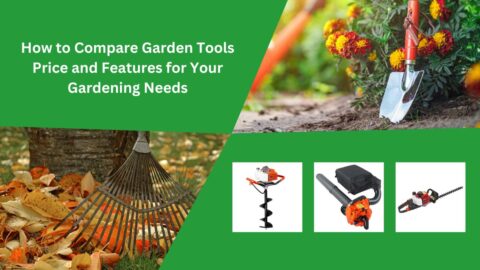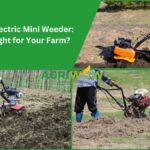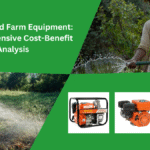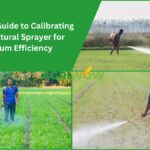Gardening is a rewarding hobby that lets you connect with nature, grow your own food, and transform your outdoor space into a peaceful retreat. However, a successful and enjoyable gardening experience hinges on one key factor—having the right tools and equipment. Whether you’re starting your first vegetable patch or upgrading your flower garden, knowing how to choose the right gear will save you time and effort. Let’s explore some essential tips to guide you when looking to buy garden equipment.
Define Your Gardening Goals
Before heading to the store or browsing online to buy garden tools, it’s crucial to first define your gardening goals. What do you plan to grow? Are you interested in cultivating a lush flower garden, or are you aiming to harvest fresh vegetables? Your gardening objectives will determine the type of equipment you’ll need.
Vegetable Gardening Tools: For vegetable gardening, consider equipment like a tiller or rototiller to prepare the soil. Raised bed kits or frames might also be essential if you’re opting for organized, space-saving garden layouts.
Flower Gardening Tools: If your focus is on flower beds, you’ll need tools like pruning shears, a trowel, and a garden fork to care for delicate plants. You might also require a watering can for precise watering.
Mixed Garden Considerations: For those with both vegetables and flowers, a versatile approach is needed. Combination tools, like a multi-use hoe or cultivator, will make your gardening routine easier.
Consider Your Garden Size
The size of your garden plays a pivotal role in determining what type of equipment you’ll need. Small, medium, or large—each requires different tools.
Small Gardens: For compact backyard or balcony gardens, manual tools like hand rakes, trowels, and a small grass cutter electric machine are perfect. You won’t need large-scale equipment, but ensure your tools are efficient and space-saving.
Medium-Sized Gardens: If you have a moderately sized garden, investing in mid-range equipment such as an electric or gas-powered lawn mower might be wise. A brush cutter electric or a brush cutter machine can help with maintaining lawn edges and trimming tougher grass.
Larger Gardens: For expansive spaces, you may want to consider heavy-duty gear. Riding mowers, large sprayers, and rototillers can make maintaining large areas easier. High-quality, powered tools will minimize the manual effort required.
Manual vs. Powered Equipment
One of the most common dilemmas for gardeners is choosing between manual and powered tools. Here are a few key considerations:
Advantages of Manual Tools: Manual equipment is often more affordable and lighter, making it easier to handle in smaller spaces. For tasks like light pruning or trimming, hand tools may be all you need.
When to Opt for Powered Machinery: Powered tools, such as electric or gas-powered mowers, are better for large gardens or when physical effort becomes a challenge. Tools like a brush cutter electric or a sprayer agriculture machine can save you time and energy on repetitive tasks.
Evaluate Your Physical Capabilities
Gardening can be physically demanding, so it’s essential to assess your physical abilities when selecting equipment. If you have joint pain, limited mobility, or simply want to ease the strain on your body, choosing ergonomic tools is the way to go.
Ergonomic Tools: Ergonomically designed tools, such as those with padded handles and lightweight builds, reduce strain on your hands, wrists, and back. Whether it’s a lightweight shovel or a comfortable hand trowel, ergonomic designs make a big difference.
Lightweight vs. Heavy-Duty Equipment: Tools made from lighter materials like aluminum can help those who struggle with heavy, bulky tools. On the other hand, for more challenging jobs, durable, heavy-duty tools might be necessary.
Tools for Beginners vs. Experienced Gardeners
If you’re new to gardening, start with a simple, basic toolkit. A hand cultivator, trowel, pruning shears, and a watering can should be your essentials. More experienced gardeners, however, may look for advanced equipment like powered tillers, irrigation systems, or specialized trimming devices like the electric brush cutter machine for fine-tuning garden landscapes.
Quality Over Price
It’s easy to be tempted by the cheapest options, but in gardening, quality always wins. Cheaper tools might break easily, which means you’ll end up spending more on replacements. Whether you’re buying from garden tools suppliers or shopping at large retailers, focus on quality.
Durable Materials Last Longer: Invest in tools made from durable materials like stainless steel or tempered aluminum. These not only last longer but also perform better in demanding gardening tasks.
Long-Term Investment: Spending more initially on high-quality equipment pays off as they often come with warranties and require less frequent replacements.
Essential Garden Equipment
Every gardener’s toolkit should include a few must-have pieces of equipment. Here are some essentials for different gardening tasks:
Lawn Mower Options
- Manual Mowers: Perfect for small gardens or if you enjoy the exercise.
- Electric or Gas-Powered Mowers: Suitable for medium to large lawns, offering speed and efficiency.
- Robotic Mowers: A high-tech solution for those who want automated lawn care.
Basic Gardening Tools
- Shovel: Essential for digging and planting.
- Rake: Useful for clearing leaves or leveling soil.
- Hoe: Great for weeding or preparing seed beds.
- Trowel: Perfect for small planting jobs.
- Pruning Shears: Necessary for cutting back plants and maintaining shape.
Watering Equipment
Whether you prefer a hose, sprinkler, or drip irrigation system, efficient watering is key to a healthy garden. Consider investing in a garden hose reel to keep things tidy.
Consider Maintenance and Storage
Proper maintenance extends the life of your gardening tools. Regularly cleaning and sharpening tools ensures they remain effective.
- Tool Maintenance: Some tools require periodic lubrication and sharpening, especially cutting tools like shears and hedge clippers.
- Storage: Storing your equipment in a shed or garage will protect them from rust and other weather-related damage.
Shop Locally and Support Small Businesses
Local garden stores not only offer a wider variety of products but also provide personalized advice. Small businesses often stock unique tools and plants that larger retailers may not carry. Plus, you get the added benefit of supporting your community. You can also ask about garden equipment suppliers near me for more convenience.
Sustainability in Gardening Equipment Choices
Sustainable gardening practices extend to the tools you use. Opt for eco-friendly options where possible, such as tools made from recycled materials or solar-powered equipment. This reduces your garden’s environmental footprint.
Conclusion
By following these tips, you’ll be well-equipped to choose the right gardening tools and create a thriving garden. From ergonomic hand tools to high-powered machines, the right equipment makes all the difference in your gardening journey.
FAQs
Q1. What are the must-have gardening tools for beginners?
A trowel, hand cultivator, pruning shears, and a watering can are essentials for beginners.
Q2. How often should I maintain my gardening tools?
Regular cleaning and sharpening should be done after every few uses to keep your tools in top condition.
Q3. Is it worth investing in electric or gas-powered tools for a small garden?
For a small garden, manual or electric tools are usually sufficient and more cost-effective.
Q4. What should I look for in ergonomic gardening tools?
Look for lightweight materials, padded handles, and designs that reduce strain on joints.
Q5. How can I reduce the environmental impact of my gardening practices?
Opt for eco-friendly tools, avoid single-use plastics, and use solar-powered or hand tools where possible.









